Hi, all! Welcome back to Cooking Conundrums with Ross, a column where I, a food writer (and in this instance, a Thanksgiving fiend) take super-specific food questions from BuzzFeed readers and offer the best solutions and cooking wisdom I can in return.

I don't mean to send a shiver down anyone's spine, but Thanksgiving is right around the corner. That means everyone's holiday-related fears, anxieties, and stressors should be arriving just about...now. (I'm doing Friendsgiving for around 22 people in my 500-square-foot apartment in a few days, so believe me, I'm right there with you.)
With this universal moment of dread on the horizon for anyone hosting (or attending!) a Thanksgiving or Friendsgiving gathering this year, I recently asked readers to send their burning Thanksgiving-related questions my way. These are the hard-hitting and very relatable questions that I simply couldn't pass up the opportunity to answer. And in doing so, y'all actually helped to quell some of my own Thanksgiving anxieties. So thank you!
QUESTION #1: "As someone who overspends like it's my job while Thanksgiving shopping, what can I do to avoid unnecessary splurging during my many grocery runs? I always budget around $200 for 8–10 people but end up spending closer to $400..."

ANSWER: Grace, you're preaching to the choir with this one. I've always found that the culprit is choosing dishes that are way too expensive in the first place, but not realizing it until you're about to swipe your credit card. To mitigate that "dear god, help me" feeling as you pull out your wallet at the register, do a test grocery run via an online retailer to see your total bill before you hit the physical store, then tweak your menu as needed to lower the overall cost.
When you look at the price of each individual item on your computer or phone screen, you'll probably gasp at how much some of them cost. Identify the most expensive items — the $15 bottles of vanilla extract, the $4 packages of each and every fresh herb known to humankind — and if you're not absolutely married to cooking those exact dishes, see if you can swap in something else that relies on cheaper ingredients instead.
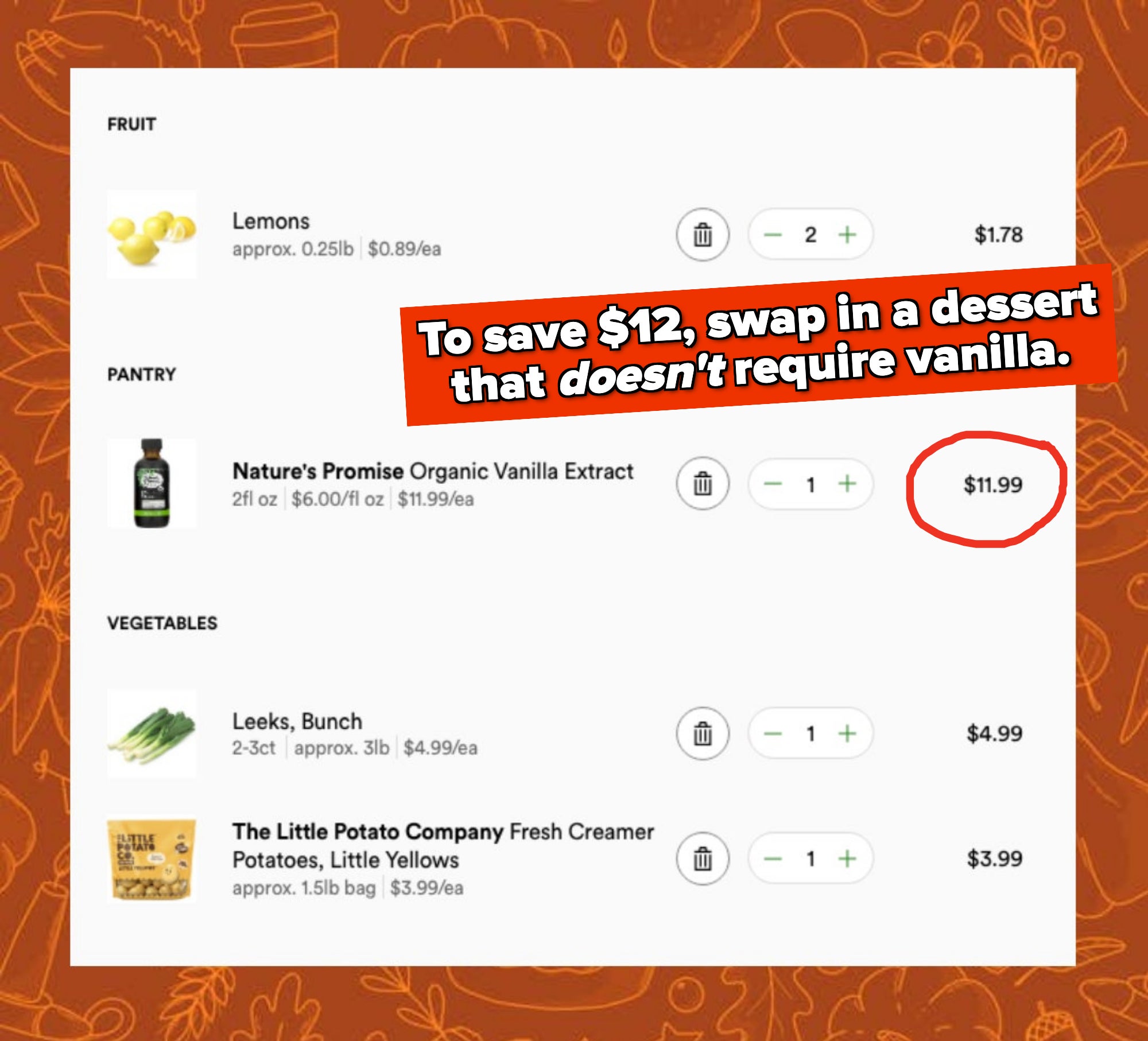
QUESTION #2: "How in the hell do I keep hoards of people out of the kitchen while I'm cooking?"
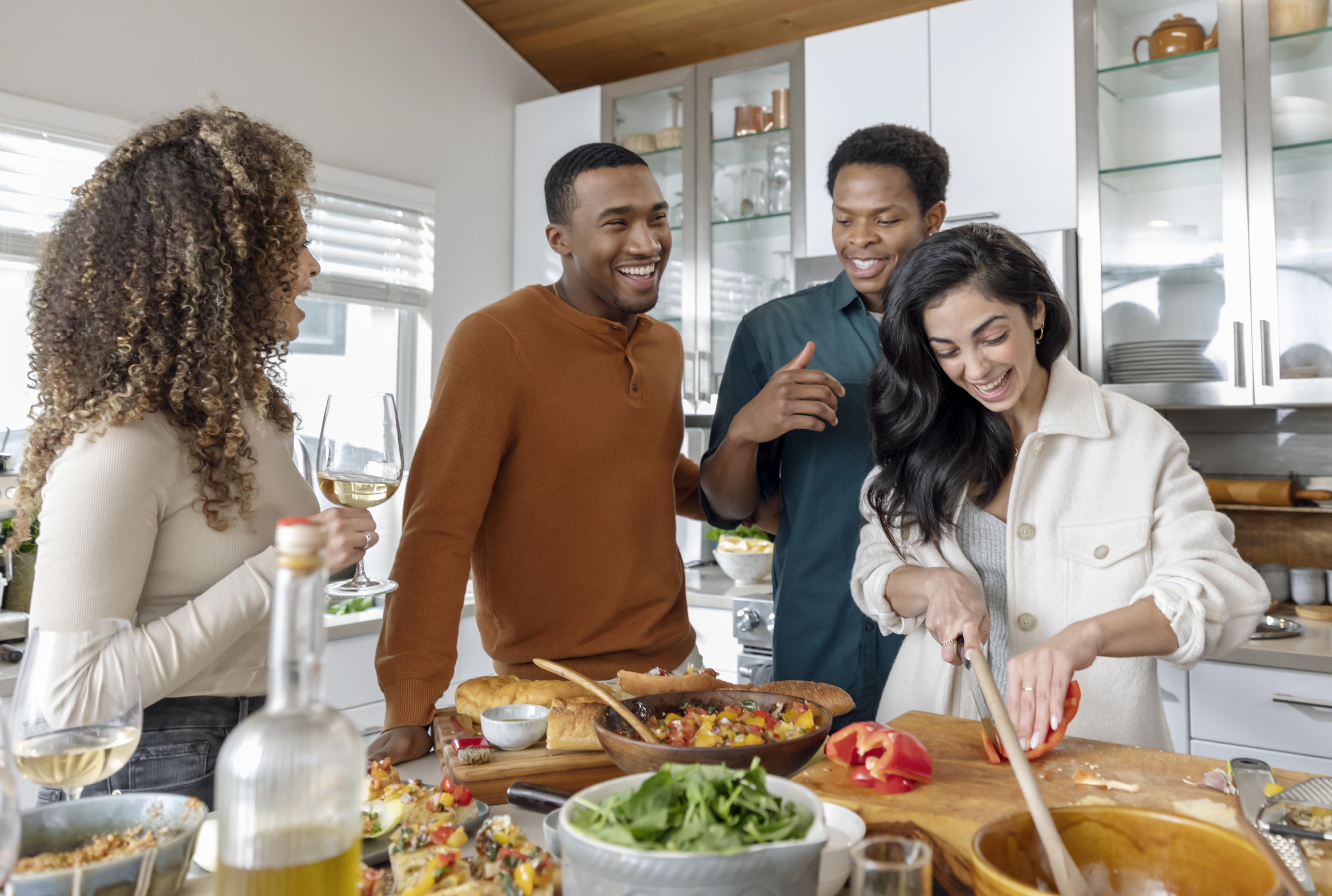
ANSWER: Keep any items that people need to frequently access — like a bar or food station — out of your kitchen. Preferably as far away from your kitchen as your floor plan will allow. While you're at it, enlist someone close to you (like a spouse or best friend) to serve as Guest Wrangler for the holiday.
In my experience, people crowd around the cook because they want to be near the host...and they also want to make it known that they're available to help. While kind in theory, it's almost always frustrating — so I feel you! To minimize kitchen hovering, appoint a partner or close friend as your guest wrangler and make it clear that their only job is to usher groups of people out of the kitchen whenever it becomes the hot spot to congregate around. Ideally, nominate someone very extroverted who can seamlessly move the party from the kitchen to the living room; appetizers, pitchers of delicious drinks, and even games can all be great ways to lure a mass of guests away from your cooking zone.
And if you're lucky enough to not have an open floor plan and you have a door to your kitchen — something I would quite literally kill for — fight your instinct to keep it open and SHUT IT! You will thank yourself later.
QUESTION #3: "I host a yearly Friendsgiving potluck for 15 or more, and every year I run into the issue of the people who don't cook bringing awful side dishes, store-bought pies, or nothing at all. How can I make sure my guests are bringing things that are actually useful?"
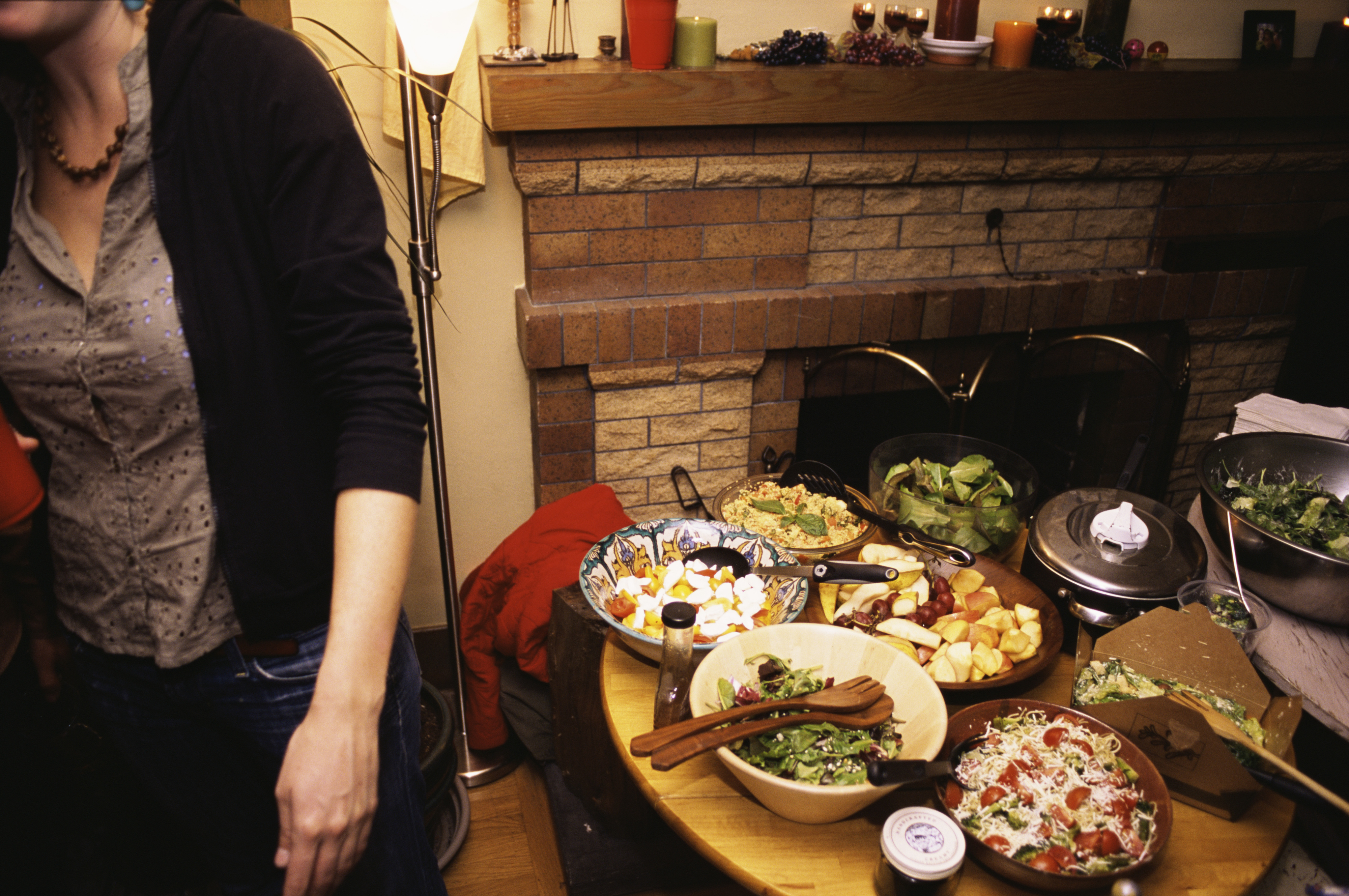
ANSWER: As a nightmarish Type A monster, I like to send around a spreadsheet to Friendsgiving (or Thanksgiving) guests that clearly lists what I'm making, what I could use help with, and what I don't need. There are plenty of good templates out there. Most importantly, however, I actually think it's beneficial to let guests contribute to a Friendsgiving "fund" of sorts if they really don't feel comfortable making anything.
I'm sure people will disagree with me, but I actually think it's more polite to give your cooking-averse friends an out by allowing them to contribute cash instead of trying their hand at a side dish or dessert. No one likes showing up with store-bought food (and most of the time, no one likes eating it), so a cash fund is a win-win; you'll have more money to shop for the big day, and no one will dread showing up with something lackluster.
I'd be remiss not to mention that you can, of course, have your cooking-averse guests bring beverages, but I'd urge you to be as specific as possible. Without any direction, you'll probably end up with an endless stash of red wine...which is by no means a problem, but it's boring after a while. Ask someone to bring a bottle of liquor for a batched seasonal cocktail. Request that another person bring mixers and sparkling water. If there are kids involved, you can even appoint someone as the juice box person! The point is, don't be afraid to nudge people toward the things you need.
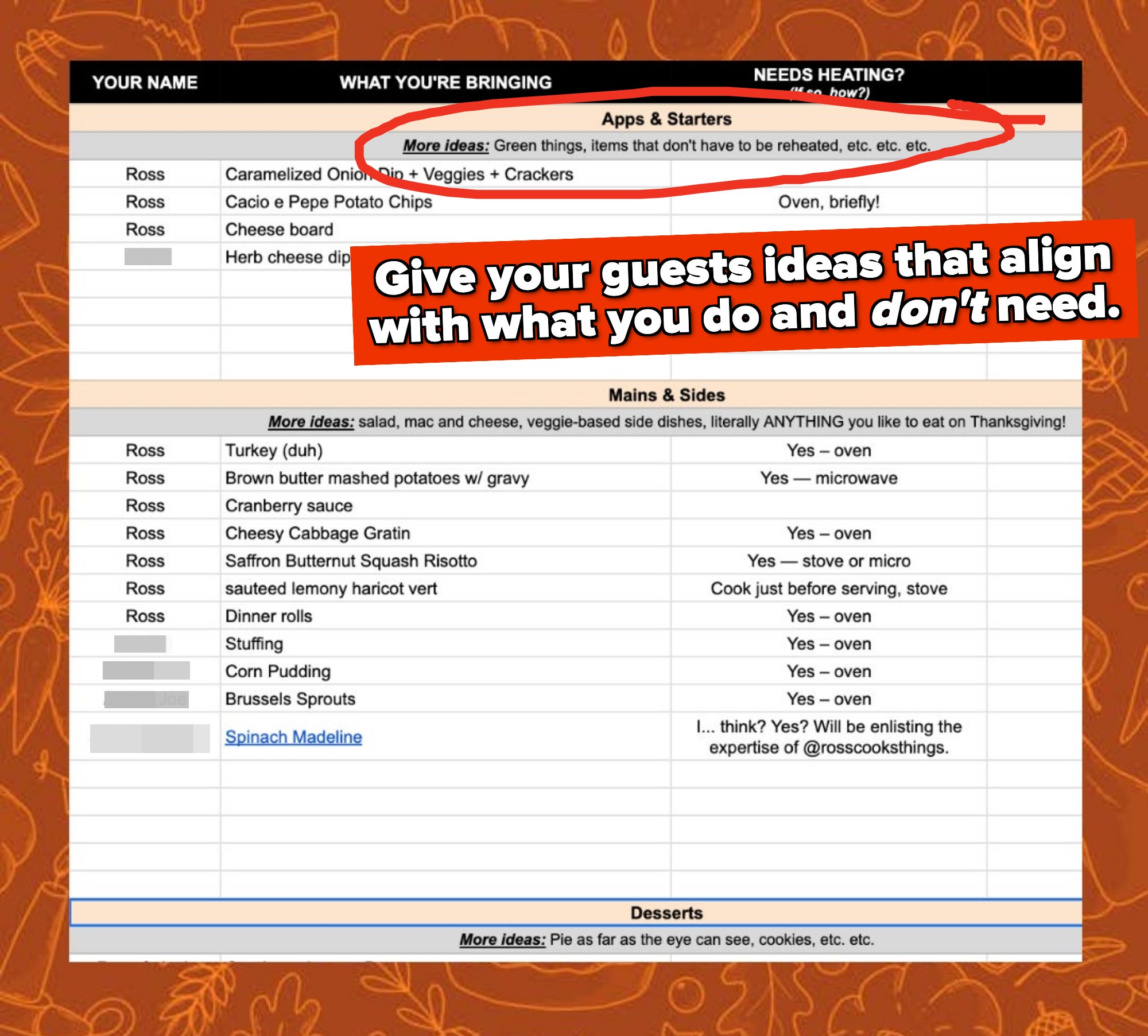
QUESTION #4: "Any tips for cooking Thanksgiving dinner in a small New York City kitchen?"
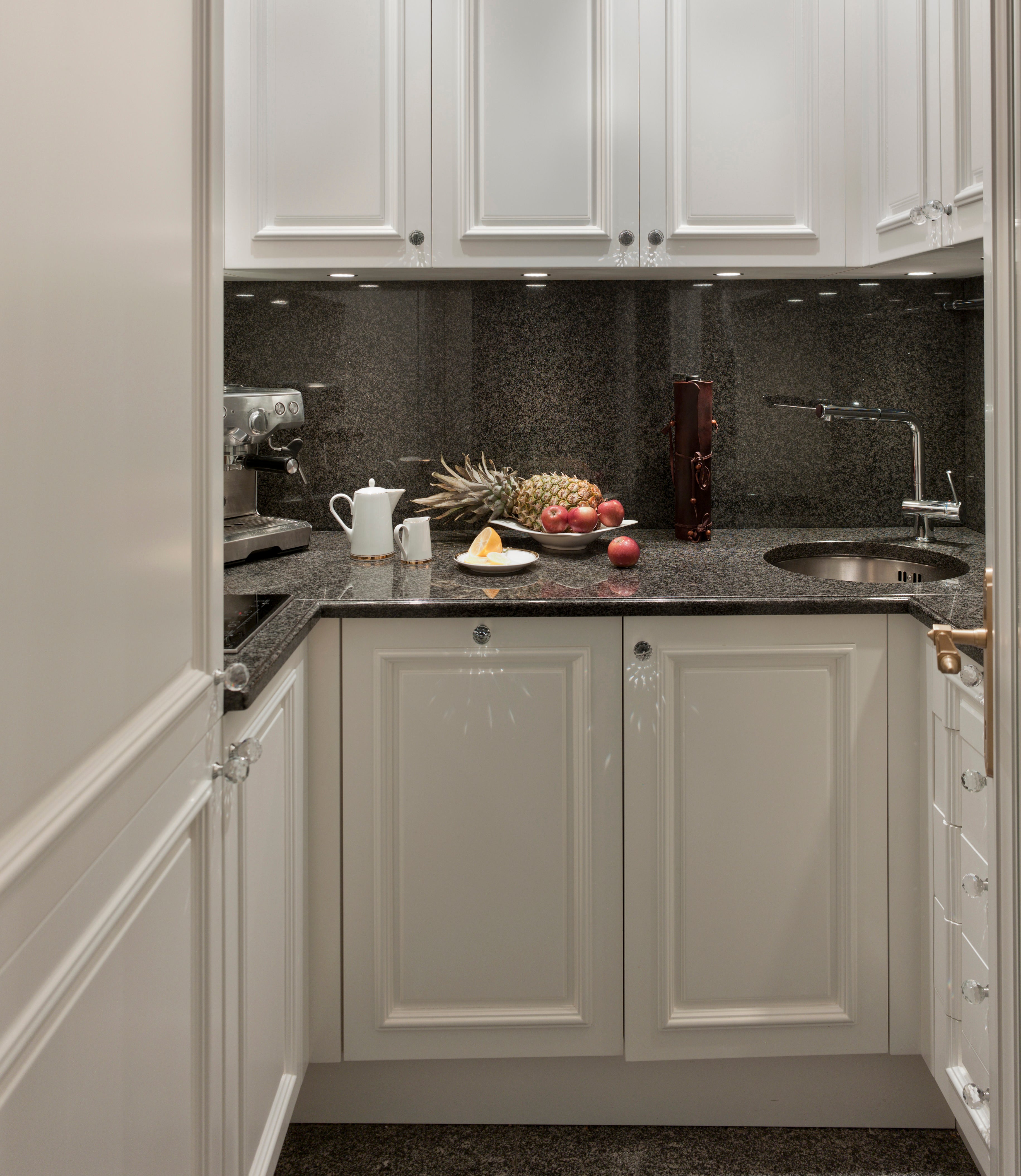
ANSWER: Straight from my own small NYC kitchen, I have plenty.
• If you don't have a dishwasher (and with a small NYC kitchen, this is probably the case), wash dishes as you go — but more importantly, make sure you dry and put away each and every dish, utensil, and piece of cookware as you go. There's no room for your dishes to hang out and drip dry on Thanksgiving, so wash 'em, dry 'em, then put them away. And honestly, you'll save even more counter space by putting your drying rack away for the day.
• As previously mentioned, make sure your bar or drink station is as far away from your kitchen as possible. Sure, maybe it'll be annoying once or twice to have to walk across the room to replenish beverages or ice, but the easiest way to invite guests into your already cramped kitchen space is to unintentionally tease them with the promise of drinks.
• Take 10 minutes before starting your prep and cooking process to lightly "choreograph" where all the sides will a) reheat in the oven and b) hang out on the counter until it's time to serve. As evidenced by the below, I actually like to sketch out where I'll reheat sides in my oven. Remember that you can use your oven floor for even more space, so long as it's set to a low temperature, and don't be afraid to stack items (like the carrots!) if you can do so in a stable way. On the countertop front, think about designating a new furniture item (like a foldable table that easily stores in the back of a closet) or an existing one (I've used a nightstand in a pinch) for any inevitable overflow.
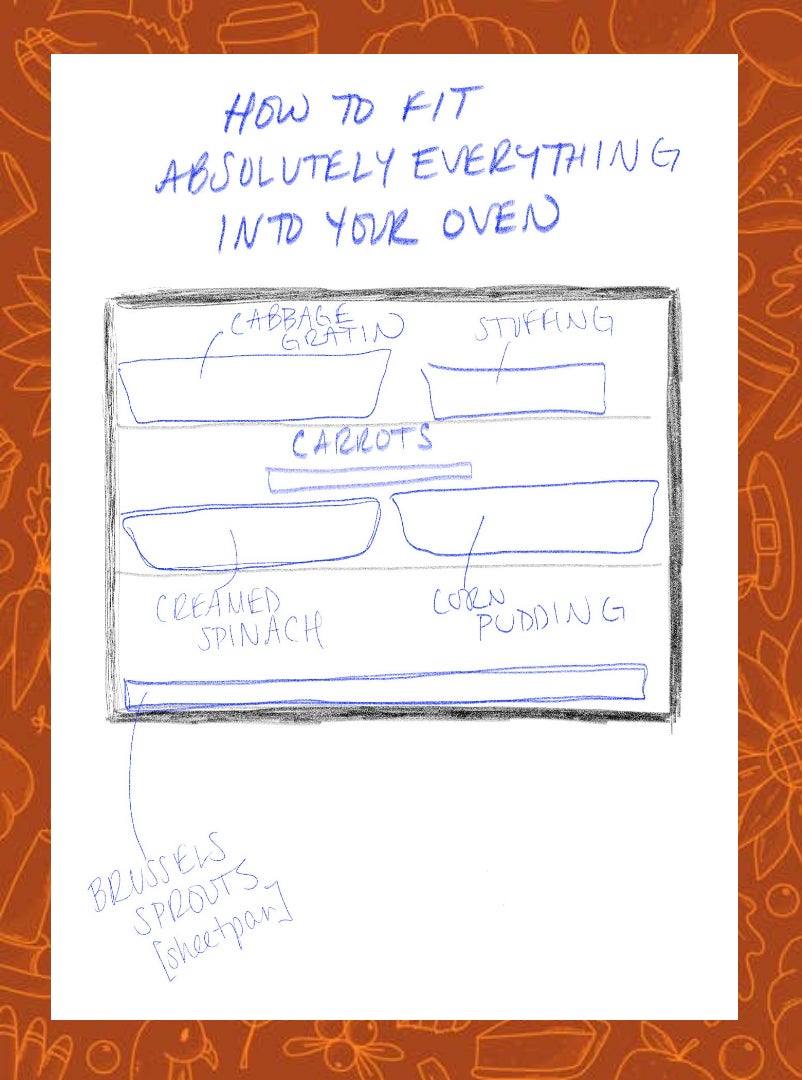
QUESTION #5: "Do people brine their turkeys anymore? Was that just a fad? What is the tried-and-true way?!"

ANSWER: Yes! People still wet brine their turkeys, but for texture and food safety reasons, it's not my favorite method. My go-to is the dry brine, and here's why.
With a wet brine, you'll submerge your turkey in a vat of salty water, usually with spices and aromatics added for flavor. The addition of water is said to keep the meat more moist, but it comes with a few cons, IMO: Your skin won't brown as nicely, and it's a food-borne illness disaster waiting to happen (splashing water + raw turkey juice = my biggest nightmare).
Instead, I'm quite partial to the dry brine method, where you rub salt and spices directly onto the turkey and pop it into the fridge — usually around 24 hours before you plan on cooking it. Doing so allows the skin to dry out a little bit, which results in easier browning and skin that's crisp without any chewiness. (You didn't ask, but I'm actually giving this dry-buttermilk-brined turkey from Rebecca Firkser a go this year for this exact reason.)
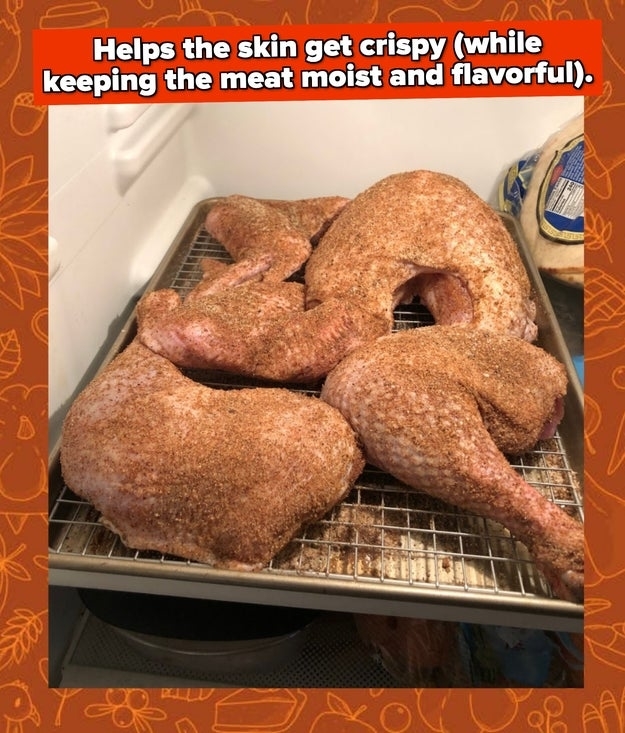
QUESTION #6: "I'm always curious about appetizers at Thanksgiving — what to serve that is still special but not too much (so people don't get stuffed before the main events). I know a cheese plate or charcuterie board is always the go-to obvious choice, but are there any other options that feel special and aren't too much work?"
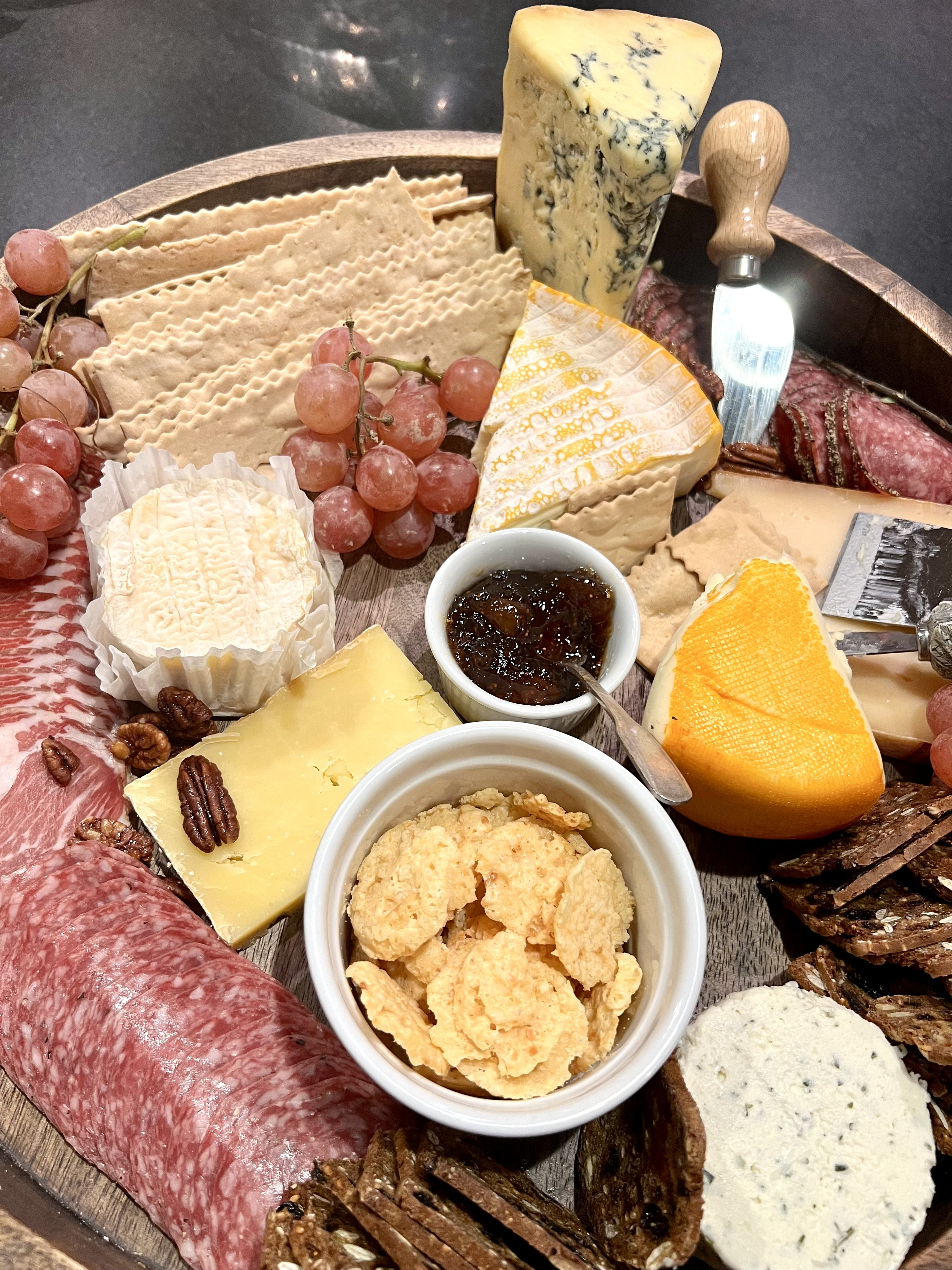
ANSWER: Apps are always unexpectedly tricky because you want things that don't require any babysitting (like small bowls of crackers or nuts you'll constantly have to replenish), and they need to feel impressive while being pretty easy to prepare. Because of that, I'm very pro-homemade, room-temperature dips that taste showstopping but are easy to serve the day of.
IMO, you can't go wrong with a really good French onion dip; everyone loves the store-bought stuff, which means that people absolutely freak over the homemade version. Make a double batch and go wild with plenty of fun store-bought dippables like cheese straws, potato chips, and every veg under the sun. Basically, buy every fun chip or cracker in stock at your local Trader Joe's. Set it out in your living area with a big batched cocktail, and your guests will be self-sufficient until it's time for the main event.
Controversial opinion: In my experience with hot apps, yes they'll go fast, and everyone will absolutely love them (looking at you, pigs in a blanket), but guests will stuff themselves like it's dinnertime because they're so damn good. I know this because I have (proudly) been that guest. Room temperature apps still give your guests something delicious to snack on, but they feel less like an "event" that everyone rushes to gobble up, and people will be far less likely to overdo it before they sit down for the meal you've worked on for many, many days.
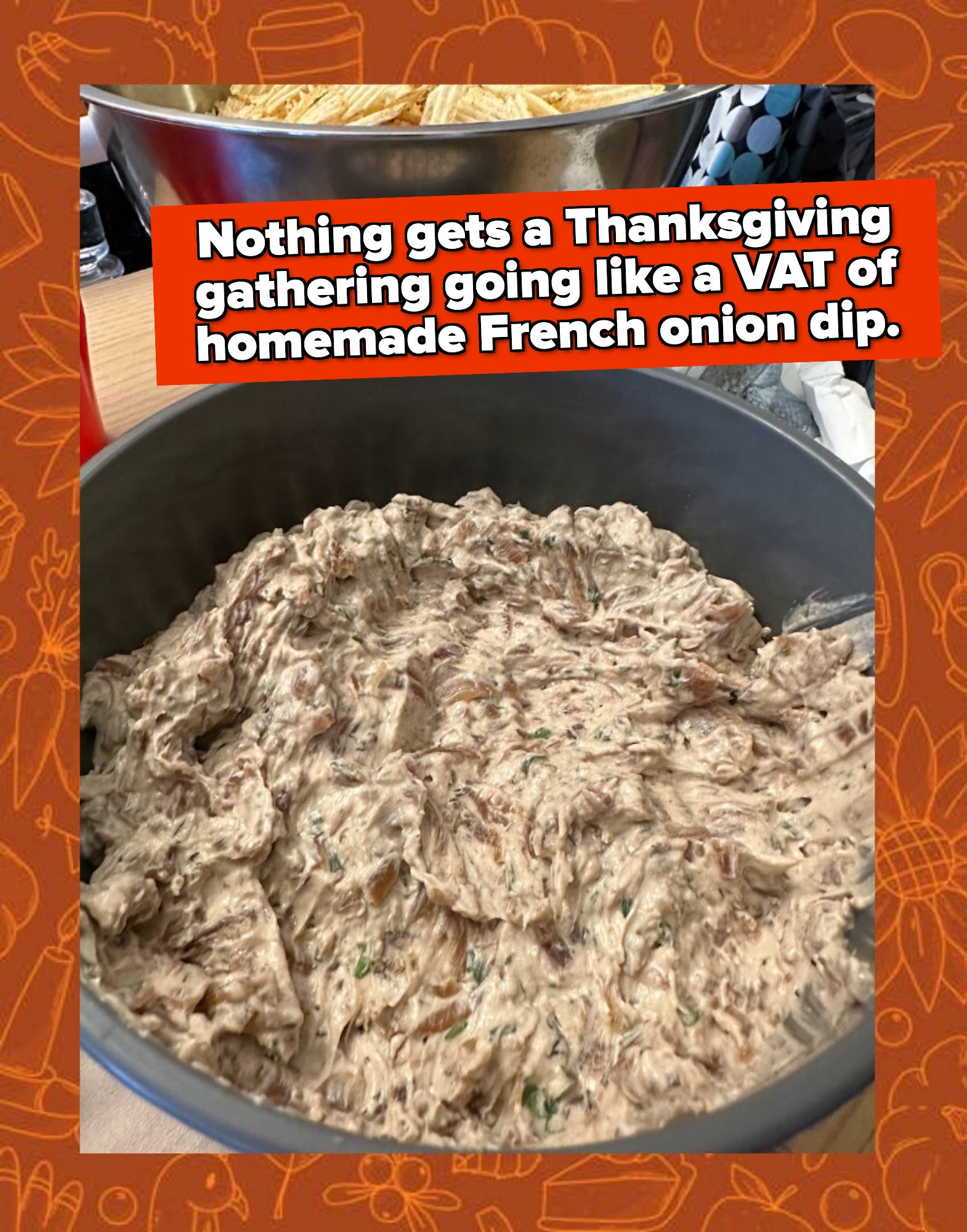
QUESTION #7: "I hope you don't judge me for saying this, but year after year I get trapped with guests overstaying their welcome after dinner and dessert. I don't want to drink with you until 1:00 a.m. — I want to ice my feet in bed with a cup of tea as soon as I've started the dishwasher. How can I politely get people out of my house without asking them to leave?!"

ANSWER: No judgment, Kerry, only respect. My sole suggestion is to make a big event out of packing up everyone's leftovers when you're ready for your guests to hit the road. Be loud, obvious, and unashamed about it — order yourself some quart or takeout containers and pass out leftovers to all your guests while you politely thank them for coming. Honestly, they probably want to go home and sleep, anyway, so don't feel too guilty.
Giving away all your leftovers is a small but worthwhile price to pay for a night of peace, quiet, and tea-sipping after many days of preparation. You've earned it.
QUESTION #8: "How can I make a very small group Thanksgiving still feel sweet and special without being wasteful?"
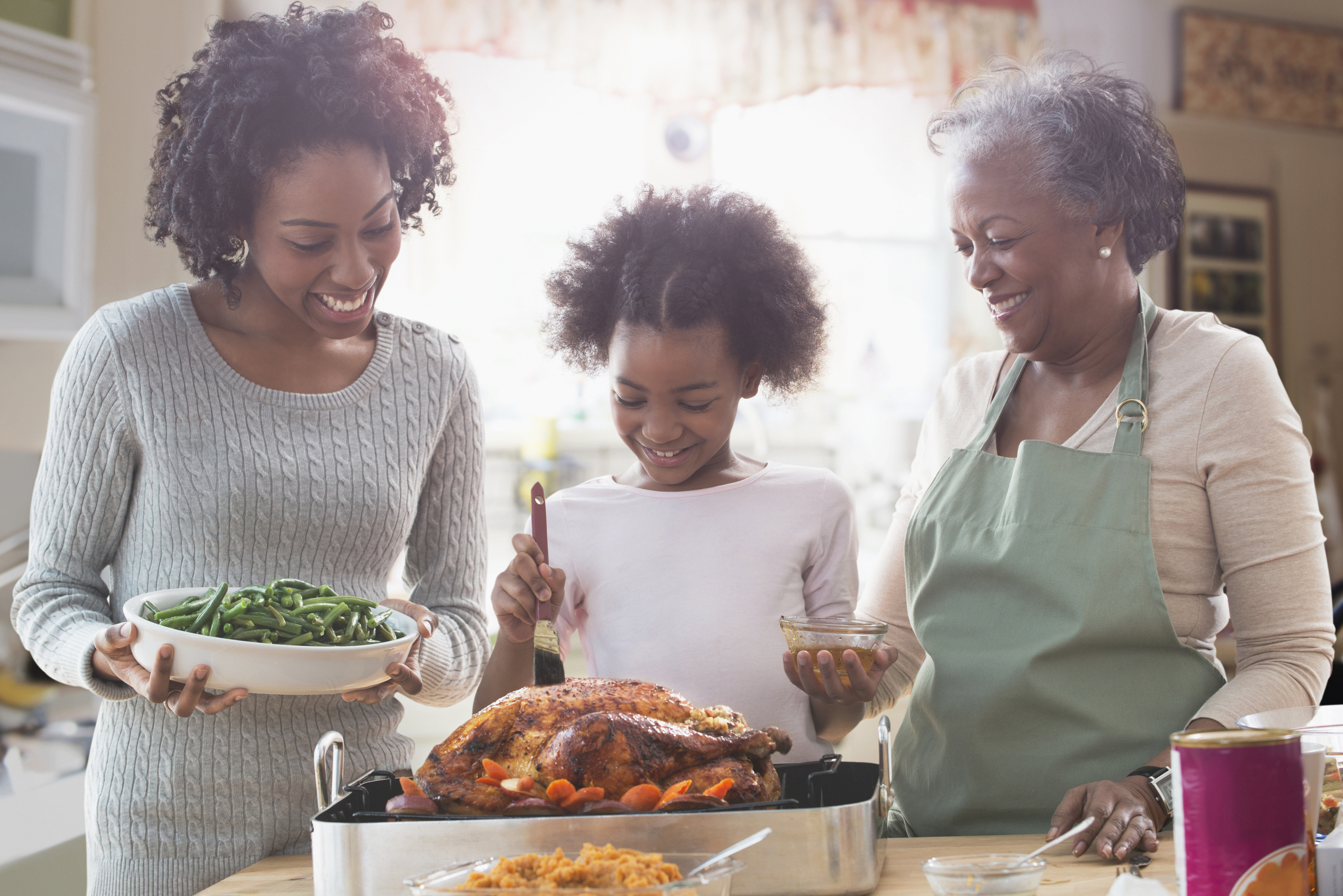
ANSWER: In my humble opinion, skip the turkey for something smaller and better. Limit your sides, too — but make sure they're all make-ahead-friendly for one important reason.
For large Thanksgiving gatherings, it's easy (albeit low-key depressing) to slip away into the kitchen and cook without being noticed or missed, really. But for a smaller, intimate group, connecting with your guests in a meaningful way should be your number-one priority, along with making sure you're not preparing a mountain of food that you won't come close to finishing.
In order to accomplish this, pick a select few dishes that taste great when made in advance, and won't require you to babysit them as they reheat:
• To start, set out some snacky things (chips, crackers, veggies) with a make-ahead dip that doesn't have to be reheated.
• Unless you're a Thanksgiving purist, opt for a smaller, easier-to-manage roast chicken to minimize food waste. If you are a Thanksgiving purist, go for a turkey breast instead of the whole bird. (But listen, if it were me, I'd rather have roast chicken leftovers.)
• Most importantly, pick no more than three to four sides that you can prep in advance, even if the limitation kills you. Something bready (like regular or cornbread stuffing), something with potatoes (preferably mashed, for microwavable heat-and-eat ease), something fresh-tasting and green (like sautéed green beans you can whip together just before serving), and a wildcard that easily reheats in the oven or doesn't need to be reheated at all.
• Align on one pie, and one pie only. I know it's hard.
If you follow the above formula, you'll minimize your food waste while ultimately spending more time with the people you actually want to socialize with on Thanksgiving...instead of babysitting 14 different side dishes that'll ultimately just get stashed as leftovers you may or may not get around to.
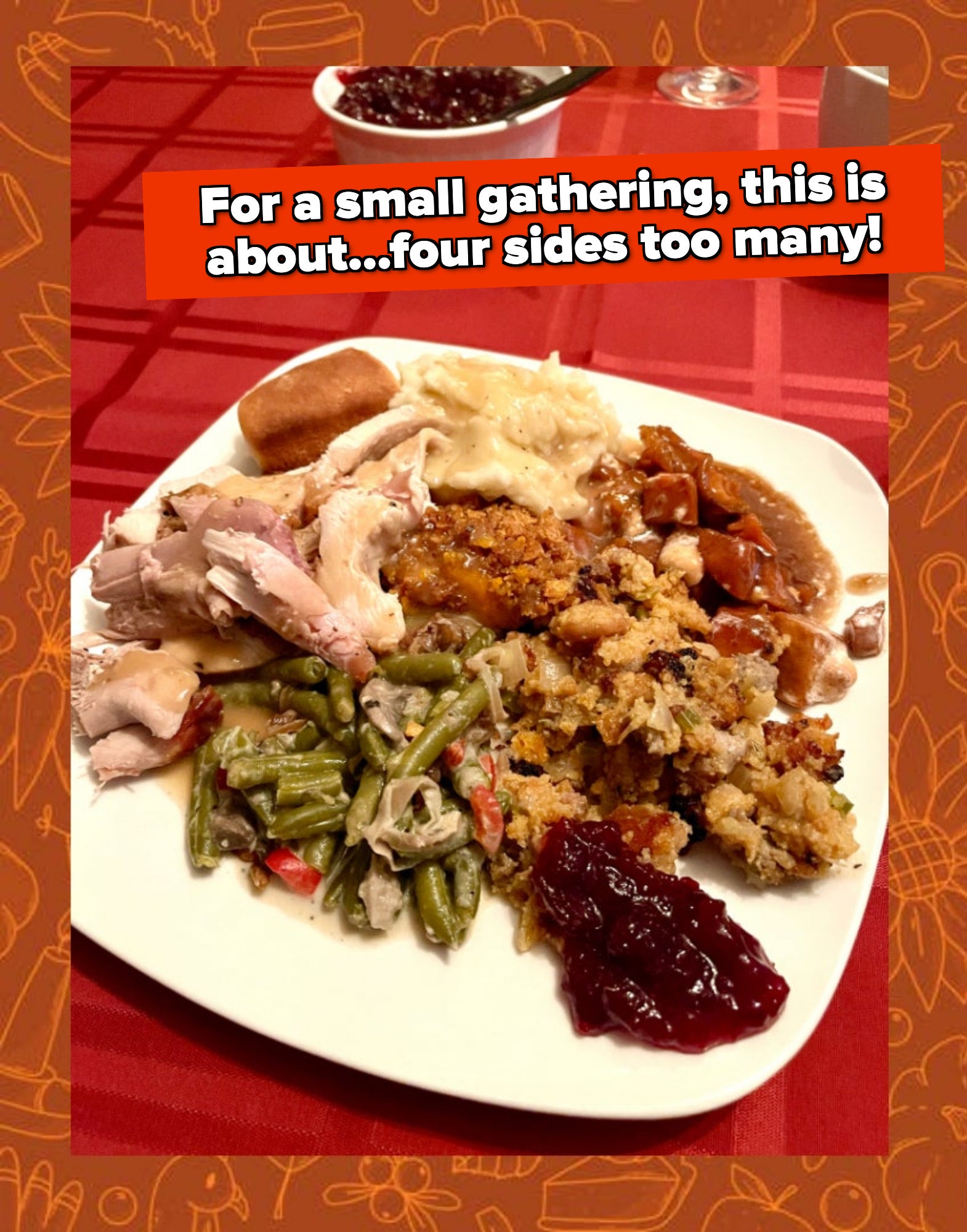
QUESTION #9: "I'm cooking for a big crowd this year. Should I do two smaller turkeys, or one big one?"
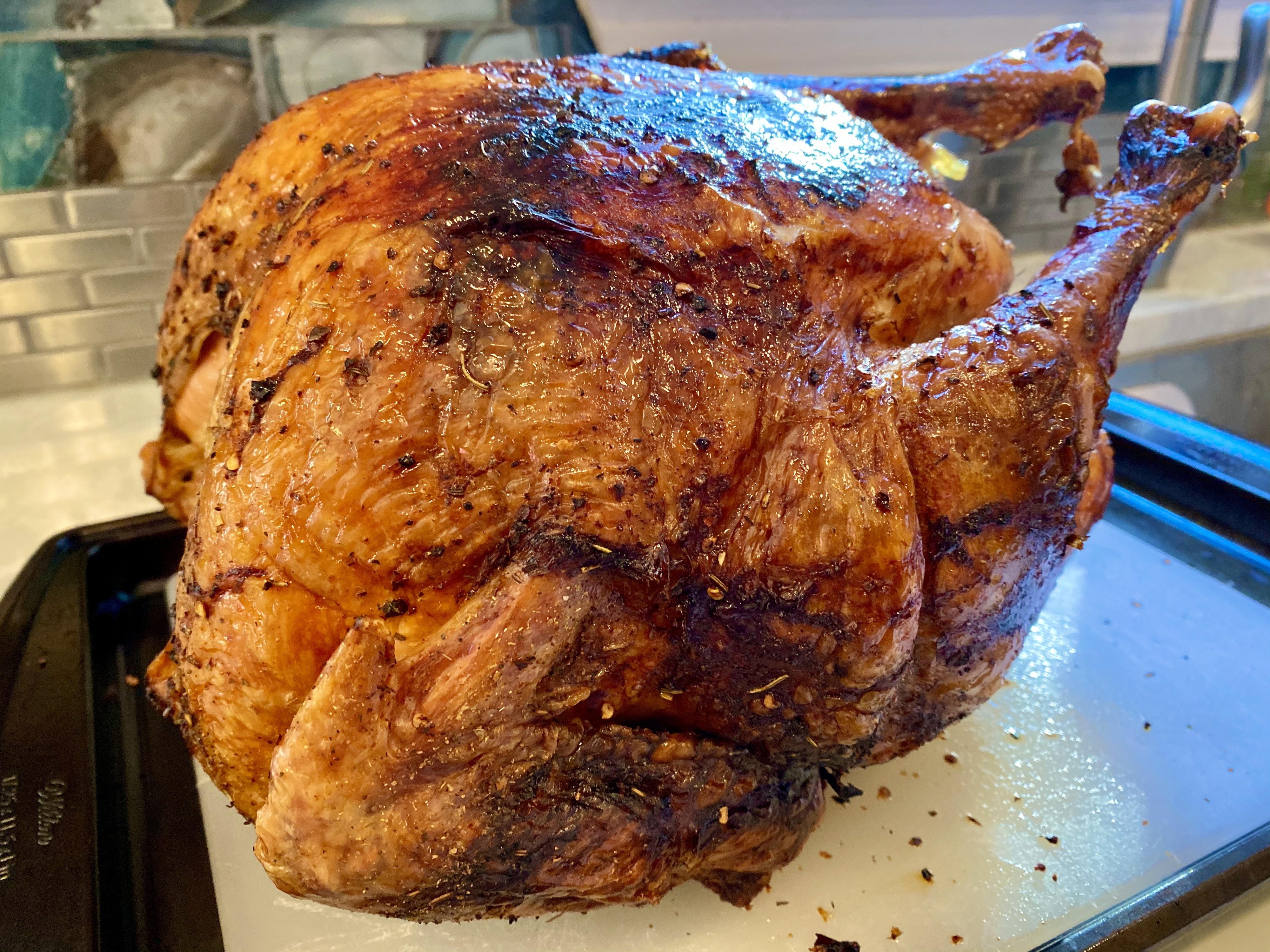
ANSWER: Please, please, please do two small! My rule of thumb is to never buy a turkey over 15 pounds; any larger and you'll have a cooked bird that's bone dry in some spots while giving medium-rare chaos in others.
Also, think of the logistics of getting a 24-pound turkey in and out of the oven. Two smaller turkeys — preferably on two roasting racks or sheet pans — will greatly decrease the chance that you experience a heavy turkey-related fumble and end up serving sides only.
QUESTION #10: "What are the best dishes to bring to a potluck?"
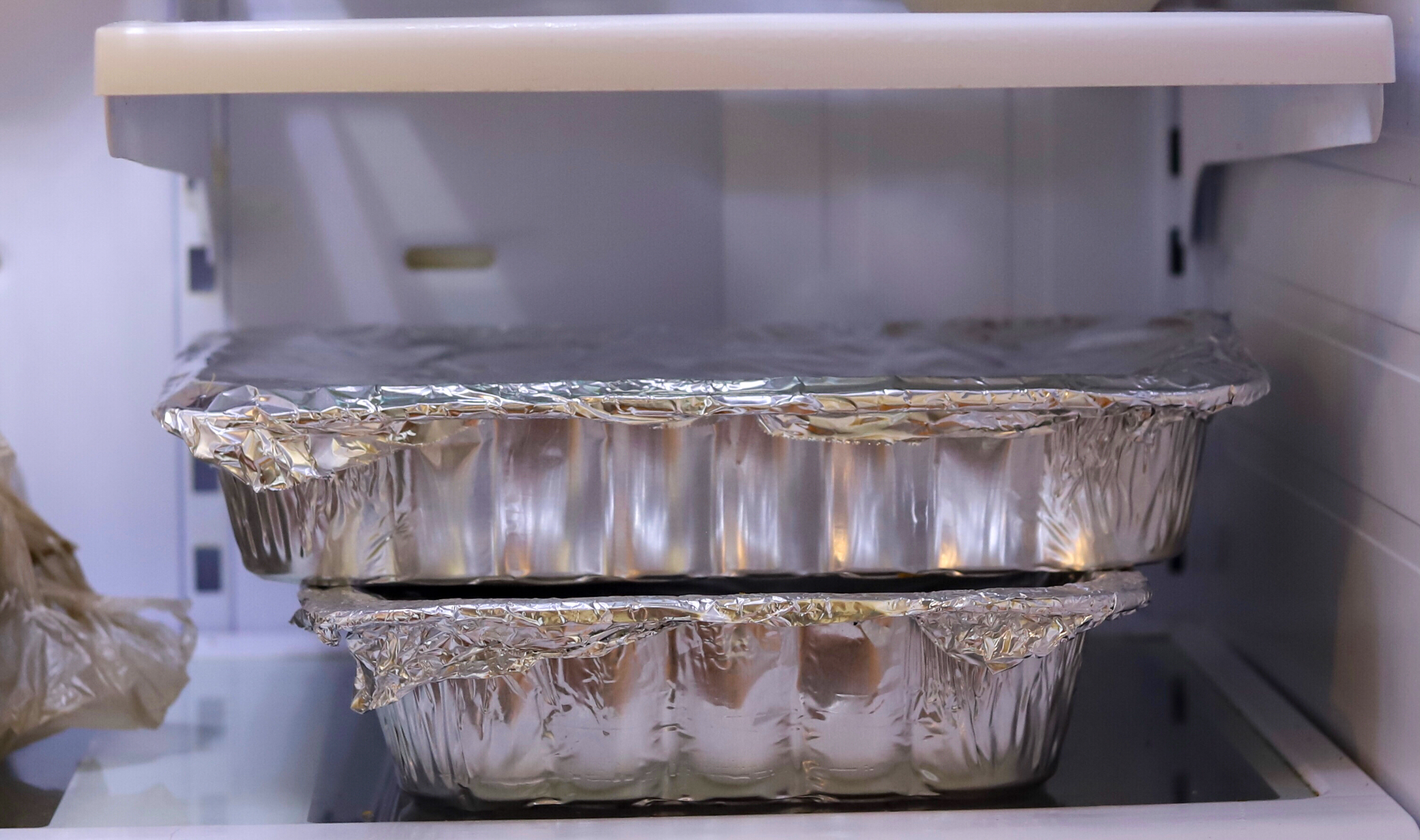
ANSWER: The answer is almost always the dish that the host tells you to bring when you reach out to them in advance — which you should absolutely do for any Thanksgiving or Friendsgiving dinner. But if your host gives you the "you pick!" answer, pick a dish that either doesn't have to be reheated, or if it does, something you can pack into a vessel with a tiny footprint.
Your host will likely be scrambling to get a whole lot of hot dishes onto the table all at once, so dishes that are great at room temperature (think: salads, dips, cheese boards, desserts) are your best bet for a zero-stress addition. But if you'd really like to bring something hot, bring something that doesn't require a large piece of cookware to reheat it. Instead of a sheet pan of roasted vegetables or a vat of your grandma's famous mac 'n' cheese, opt for mashed potatoes that can reheat in the microwave, or even a casserole in a small but high-walled dish that can easily sneak into the oven an hour before dinnertime without having to play the world's hottest, most miserable game of Oven Tetris.
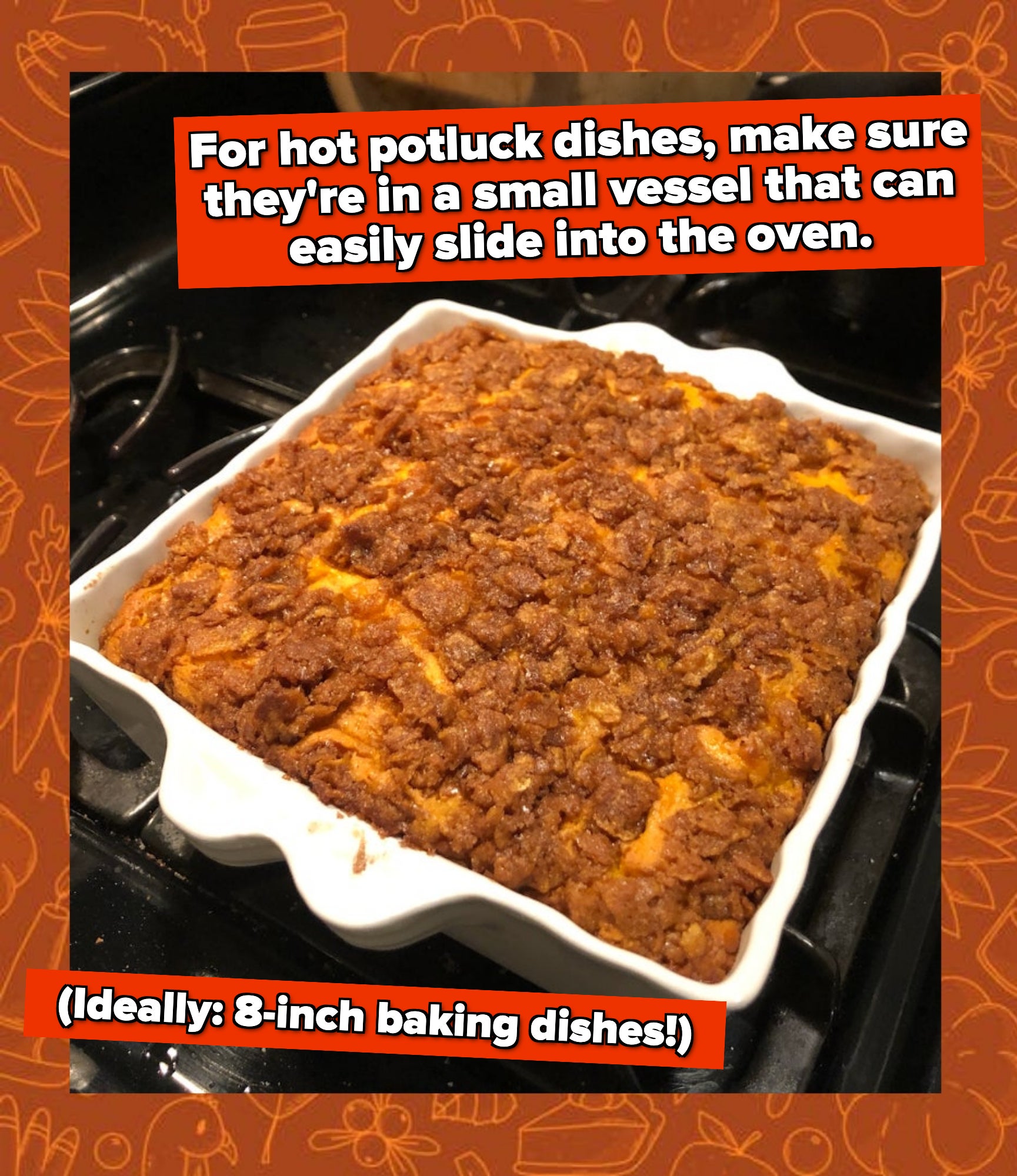
QUESTION #11: "Any tips for keeping everything hot for when it's time to serve?"

ANSWER: From personal experience, if you have an Instant Pot or slow cooker, designate it as the mashed potato warmer in advance. Other than that, a double layer of foil on the top of any dish will work wonders, especially when you place a large, heavy item on top (like a wooden cutting board) to further minimize heat loss.
Honestly, my best tip is to make sure the last cooking steps you're completing before serving dinner have nothing to do with finishing any actual cooking in the oven, so you can turn it down all the way and use it as a giant food warmer.
And, a second reminder that you can use the floor of your oven as a third "rack" of sorts to keep things warm, so long as you keep it at the lowest possible temperature!
QUESTION #12: "How do you present both vegan and non-vegan options without offending anyone?"
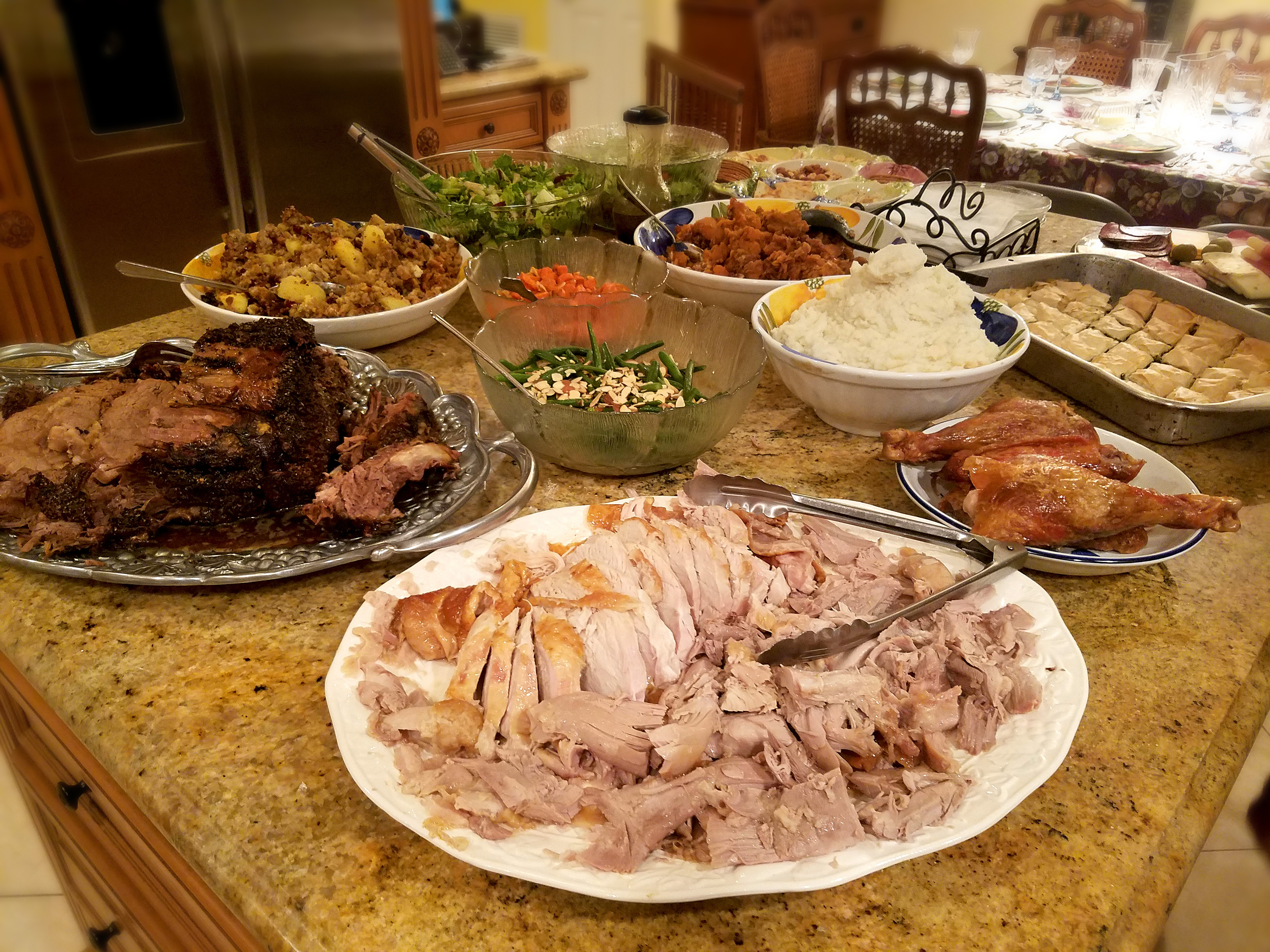
ANSWER: Minimize any weirdness by a) being transparent with vegan and vegetarian guests from the start, and b) making sure at least half of your side dishes are vegan-friendly by default.
If I've learned one thing about hosting parties (and life, honestly), it's that people don't like to be caught off-guard, and no one likes to feel alienated. If you're worried that any vegan guests will take offense to your decision to serve a turkey, text them in advance and let them know what you're thinking menu-wise. Most people will understand a host's need to cater to a slew of dietary restrictions and preferences, so they can make the decision to attend or respectfully decline when they know what they're in for. And if there's still drama...well, you have written proof that you tried to nip it in the bud ahead of time.
On the flip side of this conundrum, you can help to make all your guests feel included by making at least half of your sides delicious dishes that just so happen to be vegan. Find plant-based versions of your favorites that can easily exist alongside any non-vegan sides, and avoid designating one section of sides as the "vegan options." Vegan food is, after all, food. Your non-vegan guests can (and should!) eat and enjoy it.
That's all for today's edition of Cooking Conundrums, friends. If you have a culinary problem you need help solving or a question that demands an answer, write to me at any time via this anonymous form — or tell me about your situation in the comments below.
Happy Thanksgiving, everyone. You've got this!

